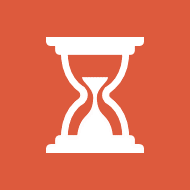Factors Affecting Sales Compensation Planning for the COVID-19 Road to Recovery
May 21, 2020
As the country looks ahead to life after the COVID-19 pandemic, the sales incentive compensation plans that carried pharma, biotech and medical device companies through the pandemic will need to be adjusted as sales representatives begin returning to the field. However, there are a number of factors affecting the road to recovery that extend to the sales compensation planning process. This article, the first of a two-part series, will examine the factors affecting the speed at which different products and different territories will recover, and what these factors mean for life sciences sales compensation planning. The second part of this article will explore how to address these factors in a sales incentive compensation plan in order to ensure it is as motivating and equitable as possible.
The Road to Recovery
For pharma, biotech and medical device sales compensation planning, there are two primary factors of interest regarding the road to recovery: product attributes and territory attributes. Not only will different products recover to normal sales levels at different speeds, but different areas of the country—even within a single state—will also recover at different speeds.
In order to explore how to design a sales incentive compensation plan that adequately addresses these differing rates of recovery, let’s first examine how various product attributes and territory attributes will affect the road to recovery.
Factor 1: Product Attributes
Critical to any sales incentive compensation plan is customizing the design to the unique conditions of each product. This is especially true for designing a sales compensation plan for the COVID-19 road to recovery. Let’s explore some of the product attributes that have significant implications for how quickly a life sciences product will recover to its normal level of sales.
Five attributes affecting the speed of a product’s road to recovery are:
Elective versus Essential
Is the treatment elective or essential? Even as states reopen and ease stay-at-home restrictions, elective treatments may continue to be delayed by patients versus essential treatments.
Frequency of Administration
How often is the treatment administered and will missed treatments be made up? Consider dentistry; a patient whose March checkup was delayed five months to August will continue checkups every six months from August and the missed March checkup will not be made up.
Product Life Cycle
At what stage of the life cycle is the product? Products in the launch and growth stages will have a longer and more difficult road to recovery than products in the mature and decline stages.
Setting of Administration
Is the treatment administered at home, in the doctor’s office, at the hospital, at an infusion center, etc.? Treatments that a patient can self-administer at home are less likely to continue to be delayed than those that must be administered in a healthcare facility.
Financial Cost
How much of a financial burden will the treatment place on the patient? The pandemic has put numerous people in a financially vulnerable position in which they may need to choose between treatment and feeding their family.
These product attributes influence sales compensation design even outside times of crisis; they take on new meaning in the current pharma, biotech and medical device landscape as they have significant implications for how quickly a product may recover from the impact of COVID-19. Thus, these product attributes must be factored into the sales compensation plan that is designed for the road to recovery.
Factor 2: Territory Attributes
In contrast to the product attributes explored in the previous section, which should always be factored into the sales incentive compensation planning process (though, of course, under a new lens due to COVID-19), the attributes we will be exploring in this section are largely unique to the COVID-19 road to recovery. These attributes will have significant implications for how quickly different parts of the country will recover, and thus shed light into how quickly one territory might be expected to recover versus another territory, even if those territories are in the same state.
Five attributes affecting how quickly a territory will recover are:
Severity of COVID-19
How severely was the territory hit by COVID-19 in terms of total cases, total deaths, cases per capita, deaths per capita, resurgence rates, etc.? How is each of these variables currently trending? The more severely the territory was hit and is currently trending, the longer the road to recovery will be.
Stage of Reopening
To what degree has the territory reopened? Reopening across states and even within states is occurring at different times in different capacities, from when stay-at-home orders lift to when different types of businesses can reopen to if schools will remain closed.
Level of Caution/Fear
What is the level of caution and fear within the community? Although states are reopening and easing stay-at-home restrictions, people may still limit their public excursions out of an abundance of caution.
Unemployment Rate
What is the unemployment rate in the territory? The level of unemployment has implications for the individual’s ability to receive care, how quickly the local economy recovers, supply chain management, etc.
Demographics
What are the demographics of the territory? Demographics such as population of the groups at higher risk for COVID-19, population concentration, population of the groups exhibiting more caution, wealth, etc. all have implications for how quickly the territory will recover.
As these attributes demonstrate, some territories will recover much faster than others even if two territories experienced the same loss of sales. Thus, these attributes must be incorporated into the sales incentive compensation plan design to ensure equity across territories.
Conclusion
With more and more states reopening and pharma, biotech and medical device sales representatives beginning to return to some form of personal selling, sales incentive compensation plans must be adjusted in order to account for both the speed at which the product(s) will recover and the speed at which different territories will recover. As explored above, both of these sets of factors are multifaceted, further complicating the sales compensation planning process and how companies can ensure that they are adequately motivating and properly rewarding their sales force. Now that we’ve explored how the speed of recovery will affect sales compensation plan design in terms of both product attributes and territory attributes, the next article in this two-part series will explore how to design a sales compensation plan for the road to recovery that considers these attributes.

















